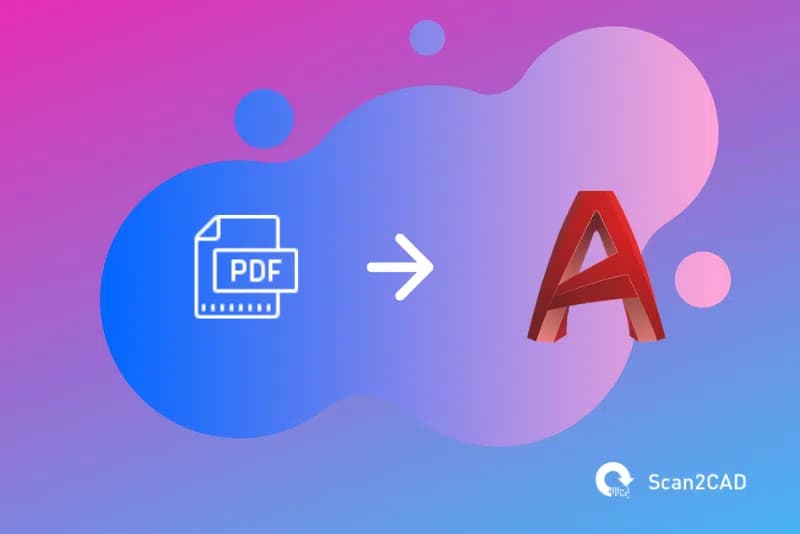Understanding Fundamentals of PDF to CAD Conversion
Read the fundamental of PDF to CAD Conversion Services in Architectural, Construction, Real estate projects. Know in detail here.

Read the fundamental of PDF to CAD Conversion Services in Architectural, Construction, and Real estate projects. Know in detail here.
Despite the fact that CAD has become a way of life for professionals in the building industry, the integration of manually created drawings with CAD systems. It still requires the expertise of top companies providing PDF to CAD conversion Services.
Even if there are many ways to solve the problem, using PDF to CAD conversion services has many advantages. Advantages such as cost savings improved drawing quality and improved drawing management efficiency. Space is becoming a costly product, hence the process increases value.
As an alternative, PDF to CAD Conversion can use to maximize designs. In order to make the mechanical drawings or technical manufacturing drafting available in editable DWG or another standard CAD format, a PDF drawing or a 2D drafting on paper is often scanned and imported to a suitable CAD platform.
Understanding the Basics of PDF to CAD Conversion
Any combination of raster images, text, and 2D vector illustrations may store in the adaptable file format known as PDF. When stored or returned, data do not change by PDF files. These files cannot modify and cannot be changed. Consequently, PDF to DWG or PDF to CAD Conversion enters the scene.
You will need the original CAD drawings in order to start the design process for any future renovations, additions, or extensions to your building.
If you’ve misplaced, lost, or just don’t have access to these PDF copies, you can still retrieve these designs from PDF copies you currently have by using AutoCAD PDF to CAD conversion. The high-quality conversion will enable you to acquire drawings for the design process that are of a higher caliber.
Benefits of PDF to CAD Conversion Services
1 – Better Collaboration with Project Stakeholders
Sharing paper drawings with others is quite challenging. Professionals would have to communicate it face-to-face, which would have limitations on time and place.
A CAD conversion, on the other hand, allows conversions to be quickly communicated with all parties involved. It is ensuring that everyone is on the same page and that no errors are made as a result of miscommunication.
Communication is accelerated by making sharing easier, and accelerated communication leads to speedier decisions, higher-quality production, and shorter turnaround times.
2 – Readily Available for Potential Edits
Drawings on paper are susceptible to numerous types of damage over time. First of all, paper can deteriorate with time. Second, even when kept in spotless condition, ink might fade and invalidate a mark.
PDF to CAD Conversions enter the scene at this point. In addition, there are other unforeseeable situations like exposure to water, changes in temperature, etc. that could cause degradation and damage.
There is always a chance that a person will make a mistake, which could cause the papers to be lost, torn, etc. After being converted from paper to CAD, they can be digitally stored in the cloud to avoid loss or damage.
No matter how carefully you try to keep them, the paper drawings, mylar, blueprints, etc. are susceptible to aging, degeneration, and destruction over time.
3 – Demonstrating Design Ideas to Project Stakeholders
The fact that architects still predominantly conduct business in an old-fashioned way makes dealing with their contractors and other business partners inefficient, even when they have a full set of CAD tools.
Even when using the original CAD papers, many transactions still need manual archives, which slows down and complicates the process. Companies that provide Image to CAD Conversion services and PDF to CAD conversion services are vital. Because the building industry is currently going through change.
To increase the effectiveness of the system, it is best to convert these paper documents into CAD format. Because keeping paper drawings and documents requires a lot of money, time, and labor.
4 – Adhering to the Latest Technology
The construction industry no longer uses the traditional manual drafting techniques of paper, pen, and stencil to create construction documentation.
The use of CAD Drawing Services is becoming more common among AEC professionals nowadays. Nevertheless, 2D hand-drawn and printed construction documents must convert to digital formats and saved.
PDF to AutoCAD conversion, paper drawings to CAD Numerous advantages of conversion. It includes increased longevity, better scalability, simplicity of storage, etc.
Tips and Tricks for Converting PDF to CAD
There are definitely too many companies that scan and manually draw paper-based or PDF drawings to convert them into CAD files.
The CAD design helps the service provider company’s drafters will import PDF to CAD platform, as the title suggests, and trace all of the geometric designs of the component, machine, assembly, sheet metal part, etc.
This CAD Conversion method has the benefit of human understanding in that the AutoCAD drafter will exactly understand which part of the design is being translated, allowing for the easy integration of any adjustments.
In an ideal world, the CAD conversion process would be so accurate that one could say it converted the entire PDF to CAD lines and angles.
The disadvantage of manual monitoring is that it takes a lot of time, which manufacturers cannot manage in order to meet shipment and delivery deadlines.
An alternative is to use third-party software that scans the PDF and, when imported into a CAD interface, converts the entire file into a vector file format that is compatible with native CAD, such as DXF or DWG. Edges, angles, bends, embossing, and other features can discover individually and tried to recreate in CAD as vector entities.
It is the technical equivalent of raster-to-vector conversion because it essentially converts raster to vector.
Additional Options for Converting PDF to CAD
Using an online converter that accomplishes the job passably is another alternative for Convert PDF to CAD files. But only converters without a need for accuracy or precision use such techniques.
Online PDF to CAD converters work quickly and effectively to convert files to native CAD formats, but they are unable to deliver results with the same level of quality as manual or automatic tracing.
Online CAD converter tools or platforms aren’t specifically designed for converting PDF to CAD because they are solely focusing on raster-to-vector conversion.
The second drawback of using an online CAD converter is that most of them have strict limits on the size of the files that may upload. They only allow a certain amount of conversions for a specific user/login and need a certain file size upload.
Above all, a design engineer or manufacturing business commits themselves to a variety of security threats when they post their ideas online.
Conclusion
The AEC Associates PDF to DWG Conversion has become a crucial tool for the construction industry as design and drafting software has advanced over the past few years.
If DWG drawings aren’t available but a future extension, addition, or change to a structure is necessary, you’ll need to employ PDF to AutoCAD Conversion.
When data is stored or returned, PDF files do not change it. These files cannot be modified or changed. Thus, PDF to DWG or PDF to CAD Conversion is displayed. You will need the original CAD blueprints in order to start the design process for any future alterations, additions, or extensions to your building.
If you are searching for the Best PDF to CAD Conversion Services in USA, UK, Canada, Australia, Germany, or Sweden? Cresire Consulting is one of the best choices for you that offer CAD conversion services worldwide.



